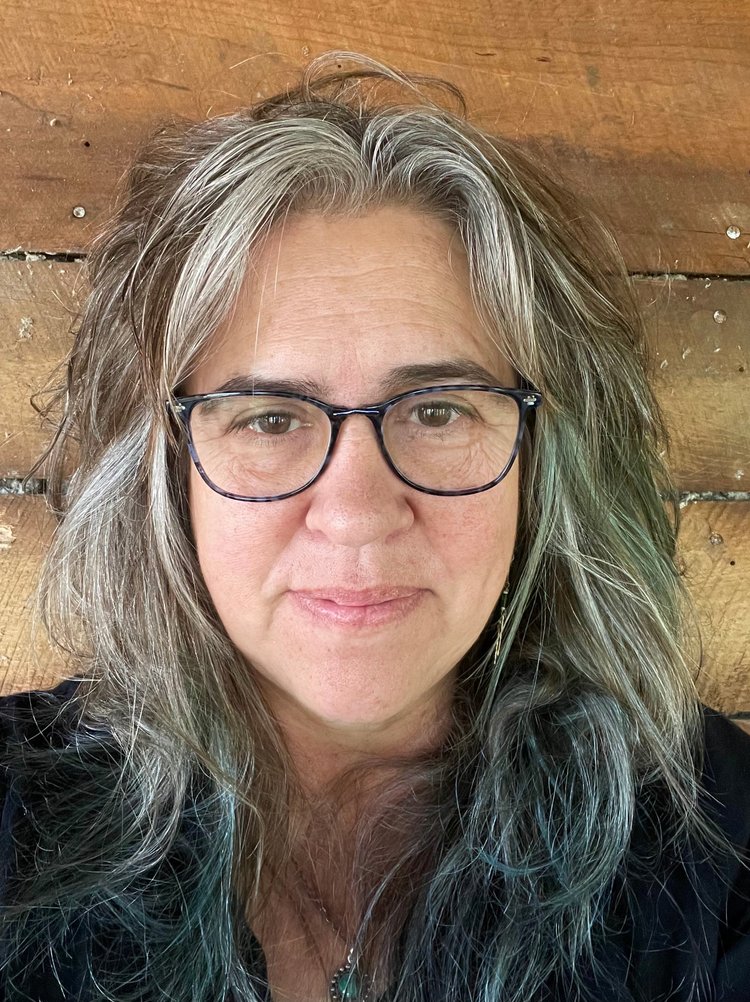Carla Elizabeth DeMello
Contact

I am a lifelong artist and have lived in Ithaca, New York for more than 30 years. I moved here in the early 90s from a crafts collective where I was a potter, graphic designer, cook, and an illustrator. My four kids have always explored and played right alongside me, all of us creating and delighting in anything colorful, sticky, beautiful, goopy, and unusual.
While I will sometimes use other materials for my sculpted designs, paper is the queen since it’s both delicate and strong, able to hold a curve or a fold, can be light or heavy, and is infinitely shapeable and forgiving.
My sculptures are a tribute to my love of the creatures and places we share this earth with. Each work is made from hundreds to thousands of hand-cut paper pieces. I’ve tried to streamline this process by machine cutting feathers or leaves but, in their uniformity, they no longer feel natural. So I embrace cutting each feather or leaf individually and lean into the zone.
One of my great joys is to make custom orders for entomologists who often study one obscure subvariant of an insect—often odd-looking and usually brown. Reference photos are tiny and blurry and frequently taken in the rain. But I love the challenge and the opportunity to explore these little beings with an artist’s eye!
Even if you’re not an entomologist, if you would like a custom order, please contact me.
Diana Ozolins
The paintings in this exhibit depict some of the beautiful places that I spent time in during the summer and fall of 2021. It was a hot summer, and several of these paintings were done on my deck with a tarp for shade and a cooling fan, where I could dash into the house to cool off and keep hydrated with cold drinks. They were scenes that caught my eye while doing daily activities. The others were painted in some of the beautiful nature preserves that abound in Ithaca, acquired and maintained by the Nature Conservatory, the Finger Lakes Land Trust, and other institutional or municipal entities, to safeguard our watersheds, minimize erosion in the steep hillsides and gorges, preserve pristine shorelines, restore wildlife habitat, and create areas open to the public for recreation. They have colorful histories and varied ecosystems each with its own type of terrain, flora and fauna.
My painting is all about color, the materiality of paint and a sense of place. The process includes walking through nature until something strikes me as beautiful enough to make my heart race. I drop my things and set up my easel. Working outdoors with nature, one must work quickly to capture the moment. In two or three hours the light changes and what was so inspiring becomes ordinary. I start by assessing the scene for its abstract underlying components—creating the boundaries of the painting—making choices for what gets in, what gets left out. I make some marks with the edge of the palette knife to indicate the placement of compositional elements – where they start and stop and how they angle. The painting process consists of many layers of paint, scraping off, reapplying, moving elements or even eliminating them, all while searching for form and shape. I bring them into the studio to combine the fresh dynamism of the moment with careful reflection. I want the painting to go beyond the gestural aspect of a field sketch but stop short of the detailed rendering of a classical landscape. Working with a palette knife, lines and blobs and chips of color that up close are just paint coalesce into a realistic image as one moves farther away from the canvas. It must be that which is sufficient and no more to not lose the mystery of that transformation. I aim to create an image that will hold the viewer captive for some moments, to experience both the pleasure of visually dancing from one color spot to another and to experience the sense of awe, wonder, and joy that I feel while spending time in nature.

